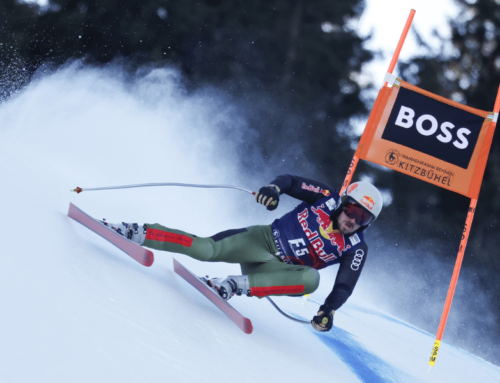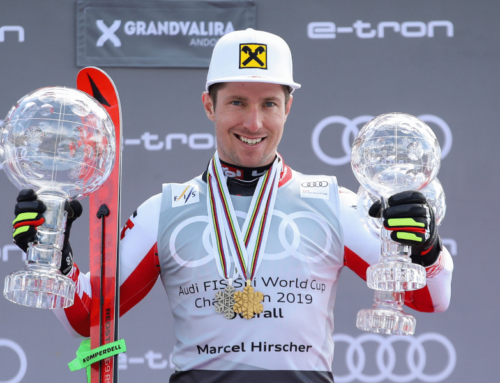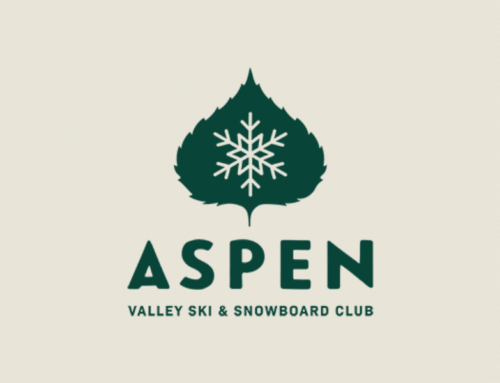Wolcott: Small clubs can still pack a big punch
It’s the beginning of January and I am driving down County Road #36 in a rain/snow mixture and I can see the lights on at the Hunt Hollow Ski Club. As I approach the mountain I am very excited to see the B-net lining our race trail. I love those parent volunteers! While I have set miles of B-net over the years at Hunt Hollow myself, we also have a group of volunteers who do a great job setting up our race trail for training and races.
While there has been much debate on controlling the high cost of alpine ski racing, one of the advantages of grassroots club programs is we can draw on a group of part-time coaches and dedicated volunteers. Some of the clubs in New York State host their junior races like a Mini-World Cup, and over the years I have been amazed at the quality of training and racing that part-time club programs provide. Often times after the races we have a B-net rolling party if there is an incoming snow storm or the ski area needs the trail for public use. The coaches, kids, and parents tend to roll the B-net very efficiently so they can get to the awards party. Pizza is a great motivator. So whether you’re running a junior lacrosse tournament or ski race, the volunteers are the fabric that keeps costs down.
As club coaches, most of us have full-time jobs and our athletes train after school under the lights, which is basically the same as Norway and Sweden where daylight is very short during the winter months. My own three kids averaged about five to six days a week on snow at training or races without me breaking the bank. We believe many club programs can offer just as much training volume as the larger resort teams or ski academies. Our one splurge was a trip to Mt. Hood in the summer, which at times was challenging to convince other racers to skip a soccer or lacrosse tournament to get them back on snow. However, I do think summer skiing was a huge benefit for their ski racing development.
Overall part-time club programs in the United States do a great job developing ski racers through the U14 level. However, once racers reach the U16-19 level that’s when our sport becomes very complicated and expensive. One unfortunate trend in youth sports is some believe if they just throw money at it, they will get immediate results. As a long-time U14 coach, I would frequently be asked if their child should remain at our club or move onto a ski academy. It’s always a sensitive subject due to both the child’s racing ability and the parent’s budget. If the athlete has talent and a ski academy can provide financial aid, then certainly that helps their decision. On the other hand, in reality most NCAA and major league professional athletes are not coming from these expensive programs. PGA star Tiger Woods grew up playing golf on primarily military courses as his father was an officer in the Army. Tiger’s high school golf coach was Don Crosby who was teacher at Western High School and is known for writing a book “5 Simple Things to take 10 Strokes Off Your Game.”
Kids become athletes by doing athletic things! If you have watched the NFL draft, Mel Kiper often mentions other sports top prospects have played. Usually wide receivers are the best athletes on the field and most of them played other sports like basketball and baseball. A perfect example in ski racing is Ryan Cochran-Siegle who was also an avid baseball player and his high school team won the Vermont State Championship. Ryan has tremendous balance and athleticism in the race course that can probably be attributed to his baseball background. While I often read about programs pushing to get their racers on snow for up to 60 days during the off-season, playing another sport most likely will make any junior racer a better athlete, which is not only great for their development but also can significantly reduce the financial burden on parents. Working out on your own or attending a camp is always good, but playing another competitive sport provides the intensity needed to become a great athlete.
In ski racing, we often read about the importance of sports psychology to help racers visualize their run and deal with disappointment. As both a coach and a parent, I think one of the key pillars for most athletes is their family. Just a simple good luck prior to their run or a hug from a parent after the race is probably the best way to reinforce their confidence. Obviously much of Mikaela Shiffrin’s success can be traced to the tremendous support she received from her parents who resisted the pressure to push her into 40 plus starts per year as a junior racer. One of the huge benefits of club race programs is the parent’s regular presence at their home mountain and during races.
The purpose of my article is not to discourage ski racers from attending a ski academy or major resort program. However, the U.S. development system clearly needs another track for training junior alpine ski racers. Therefore, one of my suggestions is to develop a comprehensive “club track” so those athletes who cannot afford an academy program, still can succeed within the U.S. Skiing development pipeline. For example, Canada’s development system is still primarily club programs as the tuition-based academy model is more unique to the United States.
The 2020-21 Canadian Alpine Ski Team included four athletes from Georgian Peaks Ski Club with an 820-foot vertical just north of Toronto. Many of the elite ski racers from Ontario are members of the Southern Ontario Division Ski Team that partners with local clubs to provide a high-performance FIS alpine program. We could develop similar regional teams with our club programs so our elite racers can participate in training camps and have representation at FIS races. Additionally, both the Dartmouth Skiway and the Middlebury Ski Bowl are fairly small mountains (around 1,000 feet of vertical) and they host annual University FIS races, so why can’t smaller clubs host FIS races too?
As I pull out of the Hunt Hollow parking lot after an evening of training I look up at our race trail and the snow groomers are making their way up to tiller another layer of fresh corduroy. I can see the ruts from three different courses from the evening’s training and our race trail looks very similar to Warrens Way at Burke Mountain or Golden Peak in Vail. Regardless of the mountain or program, the U.S. development system needs to utilize all our race programs from the exclusive ski academy to the grassroots club programs. We’re all one country and the more kids we have involved in alpine ski racing the better. Therefore, if the U.S. Ski Team wants to become “Best in the World” we need to bring affordable club programs back into the equation.





















